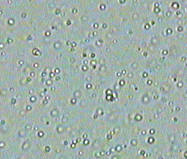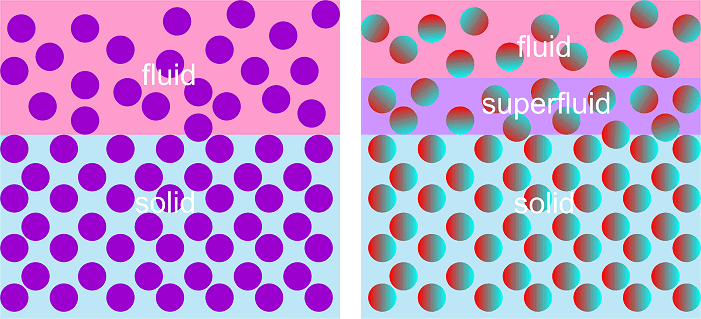
By AWT the supersolidity is a quantum analogy of liquid crystals or ice regelation. Did you notice, how fresh cold snow crackles and crunches under your feet? A supersolidity takes place here - just in quite limited extent, indeed. The trick is, the surface of helium-4 crystals isn't dry in certain range of low temperatures, as it's being covered by thin layer of molten superfluid helium, which lubricates them by the same way, like surface of snowflakes. In thin a few nanometers thick layers so called ballistic transport mechanism takes place. It can be called a "low distance superconductivity" of "low distance superfluidity". We can observe this in thin layers of graphene or semiconductors even at room temperature: the electrons aren't moving' continuously here, but in small jumps, during which they're behaving like boson condensate. This is a result of geometric degeneration of quantum wave, which is constrained in thin layer like particle in 1D box - so called quantum tunneling can take place here. A real sample of solid helium is presented bellow - it requires the temperatures bellow -272.2 ºC and over 40 atmosphere pressure to exists:

The same mechanism occurs in thin surface layers of snow or ice, where it is magnified by large number of crystalline particles involved. The fluid moves in thin quantum vortices along surface of crystals by mechanism, which is similar to domino effect. The same effect is responsible for anomalous slipperiness of ice and ice regelation. And of course, it occurs in solid helium in much more pronounced way, because of low temperature. It means, the fluid / solid mixture of helium crystals is not completely superfluous, but it responds to small deformations freely. But we can observe it even in another systems in smaller extent, for example the so called "tin cry" (sound sample) is the bulk phenomena of the same category.

The helium-4 differs from helium-3 in scope of supersolidity. Atoms of helium-3 are non-symmetric due the odd numbers of nucleons, which effectively means, ballistic transport remains constrained to surface of crystals and dislocations inside of frozen helium. The symmetrical atoms of helium-4 are adsorbed to these surfaces preferably, as they condense more easily - so they're killing the effect here like every impurity, which prohibits a free motion along surface of crystalline domains. The surface character of supersolidity in helium-3 manifests by limited temperature range, in which this remarkable effect can take place - at temperature bellow 1K the surface layer of molten helium freezes and supersolidity disappear. The water molecules are highly polarized in charge, so that the surface phenomena can take place in -52 ºC to 0 ºC temperature range, whereas some larger rod-like molecules are asymmetric up to level, they're forming a "liquid crystal" in the bulk phase even at highly elevated temperatures.

With compare to above systems, supersolidity of helium-4 is much more subtle phenomena, which occurs at lowest temperature range only, because of high symmetry of 4He atom nuclei. It manifests only at the moment, when number of crystalline domains becomes very high - it means inside of glass phase of helium, prepared by fast cooling. Such glass can be considered as amorphous phase with large amount of tiny dislocations, where the surface quantum phenomena become more pronounced due the large number of surfaces involved. Glass can flow rather quickly at nanoscale, which can be illustrated in experiments with fast healing of thin holes formed by ion bombardment. The flowing of glass is well known from limited lifetime of glass knives, used for ultramicrotomy or from healing of tiny glass cracks, which can be determined by fracture mechanics techniques. Because dislocations inside of glass phase are very small in size, the scope of ballistic transport is quite limited here, which results in "quantum jelly" or "superglass" behavior, rather then "quantum crunching".

These subtle phenomena can become quite significant even at large scales, as they can promote for example the formation of avalanches in mountain areas. It means, a subtle quantum surface effect, which applies to nanometer distances can kill people here due its cumulative effect over large number of particles involved. And this is basically, what the whole AWT is about.



eeeeeh ooooooh uuuuuuf
OdpovědětVymazat0(°|°)0
OdpovědětVymazathmmm hmmm eeeech
OdpovědětVymazatAnonymous,
OdpovědětVymazatIf I'm not wrong, you're bored